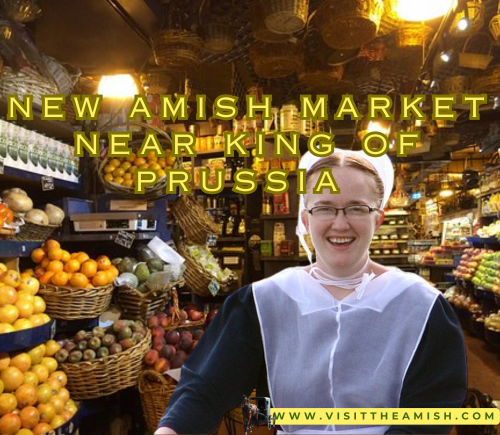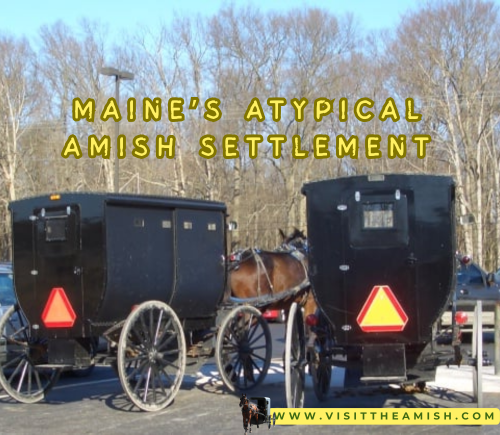Arthur’s Amish Heritage Center: Expansion Ushers in a New Era for Illinois Amish Culture
Nestled in the heart of Illinois Amish country, between the tranquil villages of Arthur and Arcola, the Illinois Amish Heritage Center (IAHC) stands as a living testament to the enduring legacy and values of the Amish community. In 2025, this cornerstone of cultural preservation is embarking on its most ambitious project yet: a 10,000-square-foot Visitor and Museum Center designed to deepen public understanding, foster community engagement, and ensure the stories of the Amish in Illinois are preserved for generations to come14.
The Vision: More Than a Museum
The new Visitor and Museum Center, set to break ground in April 2025, is not just an addition to the existing site—it’s a reimagining of what a heritage center can be. Executive Director David King describes the expansion as “a living classroom rooted in the soil of Amish tradition,” emphasizing that the space will offer hands-on agricultural education and immersive cultural programming for visitors of all ages1.
The facility will feature:
- Rotating exhibits showcasing Amish history, craftsmanship, and daily life
- Hands-on learning opportunities, including traditional crafts and agricultural demonstrations
- A film exhibit providing an intimate look at Amish values and community
- A genealogy research center for those interested in tracing their Amish roots
- A gift shop offering authentic Amish-made goods
- A flexible space for community gatherings, educational events, and speaker series14
The center’s mission is to bridge the gap between past and present, inviting everyone—from schoolchildren to scholars—to experience the resilience, ingenuity, and deep-rooted faith that define the Amish way of life in Illinois.
A Living History: The Roots of the Illinois Amish
The story of the Amish in Illinois is one of migration, adaptation, and steadfast commitment to tradition. The first Amish family arrived in Arthur in 1865, joining a broader movement of Anabaptist settlers seeking religious freedom and a simpler way of life27. Unlike their “Church Amish” counterparts, who favored central church buildings, the Illinois Amish are “House Amish,” holding weekly services in their homes—a practice that continues to this day2.
Today, the Arthur area is home to more than 4,000 Amish people, making it the largest and oldest Amish settlement in Illinois27. The community spans over 33 church districts and covers a wide swath of Moultrie, Douglas, and Coles counties7. While agriculture remains central to Amish identity, many families have diversified into woodworking, canning, and small manufacturing, reflecting both economic necessity and entrepreneurial spirit27.
Heritage on Display: The Center’s Historic Buildings and Artifacts
The Illinois Amish Heritage Center is more than a museum—it’s a living history farm spread across seven acres of prairie land. Among its most treasured features are the Moses Yoder House, the oldest Amish residence in Illinois (dating to 1865), and the Daniel Schrock House, which displays traditional wedding artifacts and architectural styles typical of the Amish34. These historic buildings were painstakingly relocated to the center, with the Yoder House famously moved by a team of eight horses in 201634.
Other highlights include:
- The Miller Amish German School, offering a glimpse into Amish education
- The Hershberger-Miller Barn, used for agricultural demonstrations and community events
- “Grossmudder’s Gaarde” (Grandmother’s Garden), showcasing traditional Amish gardening practices4
These spaces are not static exhibits—they are venues for interactive experiences, from sheep-shearing and quilting to seasonal harvest festivals and hands-on workshops.
Immersive Experiences: Learning by Doing
One of the signature features of the expanded center will be its commitment to experiential learning. Visitors will be able to:
- Participate in traditional crafts like basket weaving, quilting, and woodworking
- Engage in agricultural activities such as planting, harvesting, and animal care
- Attend live demonstrations of barn-raising, a hallmark of Amish community spirit5
- Explore the genealogy research center to uncover family histories and connections to the Amish diaspora
The center is also developing a robust curriculum for school field trips, ensuring that students from across Illinois can engage with Amish history and values in a meaningful, hands-on way1. Speaker series and special events will bring in experts, community members, and scholars to discuss topics ranging from religious traditions to sustainable farming.
The Heart of Amish Country: Arthur and Its Community
Arthur, Illinois, is more than just a backdrop for the heritage center—it’s a vibrant village where Amish culture is woven into daily life. Horse-drawn buggies travel the flat, paved roads, and visitors can experience the rhythms of Amish farm life, from milking cows (now with modern, non-electric equipment) to baking fresh bread in family-run bakeries35. Local businesses offer everything from hand-carved furniture to homemade jams, reflecting the community’s commitment to craftsmanship and self-sufficiency.
Guided tours, often led by Amish residents, provide an authentic window into the faith, customs, and economic life of the community. Whether sharing a meal in an Amish home or riding in a horse-drawn buggy, visitors are encouraged to slow down and appreciate the simplicity and intentionality that define Amish living3.
Preserving the Past, Building the Future
The expansion of the Illinois Amish Heritage Center is a $3 million project, with fundraising efforts ongoing through 20251. Executive Director David King emphasizes that the initiative is “for the entire community—one that reaches across generations and beyond county and state lines.” The goal is not only to safeguard the legacy of the Amish in Illinois but also to create a space where their story can be told with depth, nuance, and respect1.
In a rapidly changing world, the center stands as a reminder of the enduring power of tradition, faith, and community. Its expansion signals a renewed commitment to education, cultural exchange, and the celebration of a way of life that continues to shape the region.
Why the Expansion Matters
The new Visitor and Museum Center will serve as a regional hub for cultural heritage, tourism, and education. By offering immersive experiences and accessible resources, the center aims to:
- Foster greater understanding and appreciation of Amish values, including simplicity, humility, and mutual aid
- Support local economic development by attracting visitors and promoting Amish-made goods
- Serve as a resource for genealogists, historians, and educators interested in Anabaptist history and rural life
- Provide a gathering place for community events, interfaith dialogue, and cultural celebrations
Events and Programs: What’s Ahead
The IAHC hosts a range of annual events, including:
- Sheep to Clothing Day (April 26, 2025): Demonstrating the journey from raw wool to finished garments
- Harvest Festival (October 10-11, 2025): Celebrating the bounty of the land with food, music, and crafts4
As the new center takes shape, expect expanded programming, including workshops, lectures, and seasonal activities designed to engage visitors of all backgrounds.
Supporting the Center: How to Get Involved
Community support is vital to the success of the expansion. The center welcomes donations, volunteers, and partnerships with schools, businesses, and cultural organizations. By contributing, supporters help ensure that the stories, skills, and values of the Illinois Amish are preserved and shared for years to come1.
For those interested in learning more or getting involved, the center provides regular updates and opportunities for engagement through its website and newsletters.
The Illinois Amish Heritage Center’s expansion marks a pivotal moment in the ongoing story of Amish life in the Midwest. By blending historic preservation with innovative educational programming, the center is poised to become a beacon for cultural understanding, community engagement, and the celebration of a uniquely American heritage. Whether you’re a local resident, a history enthusiast, or a curious traveler, the new Visitor and Museum Center promises an experience where history comes alive—and where the future of Amish culture is being built, one story at a time.
Citations:
- https://www.yahoo.com/news/expansion-works-arthur-amish-heritage-004753793.html
- https://illinoisamishcountry.com/wp/about-the-illinois-amish/
- https://www.islands.com/1832312/arthur-illinois-village-heart-amish-country-full-culture-farms-small-town-charm/
- https://www.illinoisamish.org
- http://illinoisamishcountry.com/wp/about-the-illinois-amish/more-about-the-illinois-amish/
- https://www.theinnatleolavillage.com/blog/amish-culture/
- https://amishamerica.com/illinois-amish/
- https://illinoisamishcountry.com/wp/about-the-illinois-amish/more-on-the-illinois-amish-community/
- https://www.illinoisamish.org/aboutvision
- http://acmtours.com/group-tours/youth-groups/
- https://www.amish365.com/where-are-the-amish-in-illinois/
- https://thephotographeronline.com/current-issue/teaching-at-an-amish-farm/
- http://arthur-illinois.com/amish-information/
- https://will.illinois.edu/news/story/amish-attraction-could-boost-east-central-illinois-tourism
- https://en.wikipedia.org/wiki/Amish
- https://tilford.k-state.edu/resources/cultural-centers/illinois.html
- http://publish.illinois.edu/iaslibrary/2014/10/19/the-amish-of-illinois/
- https://www.illinoisamish.org
- https://www.amishtables.com/pages/amish-culture
- http://amishillinois.com/amish-3/history/
- https://amishillinois.com/amish-3/faq/
- https://www.illinoisamish.org/amish-schools
- https://amishillinois.com/amish-3/amish_education/
- https://www.mapquest.com/us/illinois/illinois-amish-museum-and-heritage-center-460063335
- http://www.centralstatestrailways.com/amish_country.html
- https://www.agintheclassroom.org/history/posts/who-are-the-amish/
- https://www.youtube.com/watch?v=5AQsteQPGlk
- https://stlcc.edu/docs/workforce-employer-services/25p-cecatalog_final_web.pdf
- https://www.montourcounty.gov/getmedia/5ac26e42-76d6-46db-8f7c-737cc8b646ca/montourcofullreport.pdf
- https://www.linkedin.com/in/nishpparekh
- https://mediapolis.biblionix.com/catalog/titles/
- https://www.pequeatwp.org/wp-content/uploads/2014/02/pequea_twp_comp_plan_2005_web.pdf
- https://www.astralcodexten.com/p/open-thread-374
- https://brill.com/view/journals/ecso/17/1/article-p7_7.xml?language=en
- https://www.bedlamfarm.com/2021/06/14/the-amish-and-their-long-struggle-with-the-modern-world/
- https://documents.coastline.edu/Distance%20Learning/Open-Edu-Resources/BUS%20C150%20Principles%20of%20Marketing.pdf
- http://www.asjournal.org/tag/amish/
- https://scholarworks.arcadia.edu/cgi/viewcontent.cgi?article=1032&context=senior_theses
- https://press.jhu.edu/newsroom/lives-amish-women
- https://plainanabaptistjournal.org/index.php/JPAC/article/view/7943
- https://amishamerica.com/the-trouble-with-the-amish/
- https://www.leg.mn.gov/docs/2018/other/180824.pdf
- https://www.britannica.com/topic/Amish
- https://pmc.ncbi.nlm.nih.gov/articles/PMC8411892/
Like this:
Like Loading...

















